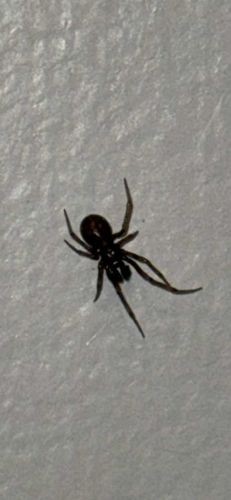False Widow Spider
Scientific Name: Steatoda grossa
Order & Family: Araneae, Theridiidae
Size: Females typically 6-10 mm; males 4-6 mm (body length). Excluding leg span.

Natural Habitat
Commonly found in and around human dwellings, basements, sheds, garages, and other undisturbed sheltered places. They often build irregular, tangled webs in corners or under objects.
Diet & Feeding
Mainly feeds on other small insects and arthropods, which they catch in their webs. This includes flies, mosquitoes, woodlice, and sometimes other spiders.
Behavior Patterns
Nocturnal hunters, resting during the day. They construct irregular, sheet-like webs. Females are known to be reclusive and territorial. They are generally not aggressive but will bite if provoked or trapped.
Risks & Benefits
Potential Risks: While not considered medically significant like black widows, their bite can cause symptoms such as localized pain, swelling, and redness, which usually subside within a few hours to a few days. Systemic effects are rare but can include nausea, headache, and lethargy. Potential Benefits: They help control populations of various household pests, such as flies and other insects.
Identified on: 10/18/2025